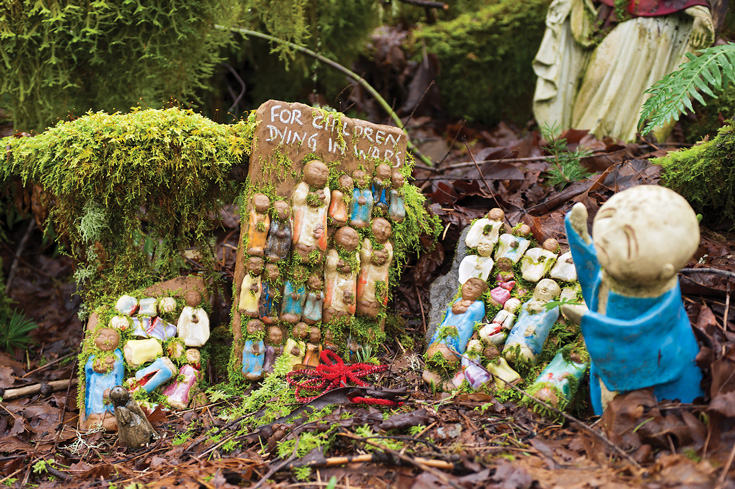If you meditate regularly, even when you don’t feel like it, you will
make great gains, for it will allow you to see how your thoughts impose
limits on you. Your resistances to meditation are your mental prisons in
miniature.
- Ram Dass -
A personal blog by a graying (mostly Anglo with light African-American roots) gay left leaning liberal progressive married college-educated Buddhist Baha'i BBC/NPR-listening Professor Emeritus now following the Dharma in Minas Gerais, Brasil.
In
the four foundations of mindfulness, as laid out in the famed
Satiphatthana Sutta, the Buddha offers four postures for practicing
meditation:
A monk knows, when he is walking, “I am walking”; he knows, when he is standing, “I am standing”; he knows, when he is sitting, “I am sitting”; he knows, when he is lying down, “I am lying down”; or just as his body is disposed so he knows it. Walking meditation is often described as a meditation in motion. |

|
|||
| THE PATH OF BEING HUMAN | |||
| This week I stood at the freshly-dug gravesite of my mother-in-law, Annie, and recited the Lord’s Prayer. I was raised Catholic in my early childhood, so the verses come back to me easily at times like this. A few years ago, I might have struggled with such prayers and rituals, fearing that I was being disingenuous, telling myself, I’m a Buddhist after all! But somehow that doesn’t hold sway any more. People often ask, “How do you become a Buddhist?” The simple answer is that you take refuge in the Buddha, dharma, and sangha. But, as you go forth, you still need to work out what it means to be a Buddhist for you. When I began practicing and studying Buddhism more than twenty years ago, my peers and I were intent on receiving dharma transmissions (abhishekas) and accomplishing the levels of the path laid out for us. Now, that path seems small and constricted to me. Perhaps it’s because I’ve grown increasingly aware that the world is in desperate need of our help and Buddhism doesn’t directly answer many of the pressing questions of the day, like “What do we do about the climate crisis?” or “How do we respond to attacks on women’s reproductive freedom?” In her article, “Your Liberation Is on the Line,” Rev. angel Kyodo williams makes a compelling case for the power of dharma to challenge the status quo and undo systems of oppression, namely racism and patriarchy. She’s able to do so because she holds a big view of what dharma can and must be: “So when dharma teachers try to tell me that this work is not the dharma, I say they’re confusing the true dharma with the dharma they’ve made small.” Rev. williams goes on to clarify that she’s talking about the path of liberation, which extends beyond our limited ideas of a Buddhist path. So what does it mean to be a Buddhist? That’s something you may still need to figure out. But for me, that question has been replaced by a new one: What does it mean to be fully human? Showing up in your life, being fully human, and engaging with the suffering around you (and in you) can take myriad forms: protesting against building a pipeline on Indigenous peoples’ lands; taking the time to say hello to a stranger and give them a hand; and, maybe, saying the Lord’s Prayer and making the sign of the cross alongside your grieving Catholic relatives. Whatever it looks like, the path of being fully human is, at its core, a path of genuine connection, care, and love. And to me, that’s one worth choosing. —Tynette Deveaux, editor, Buddhadharma: The Practitioner's Quarterly |